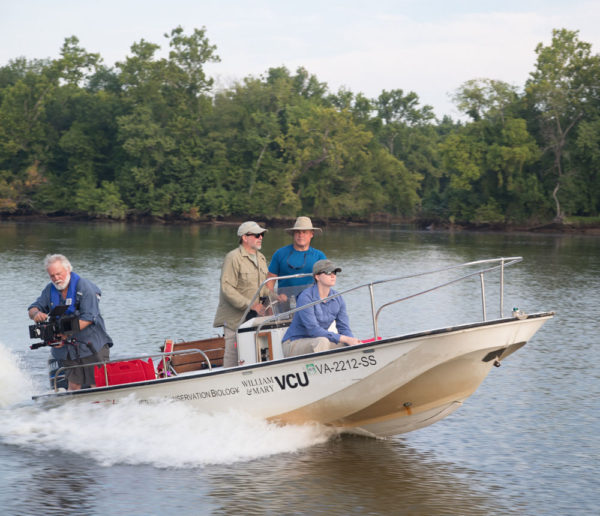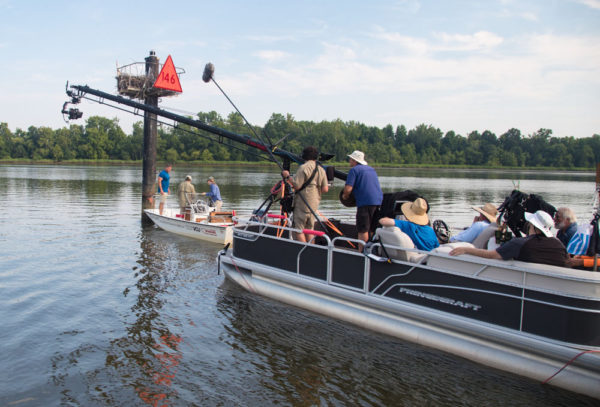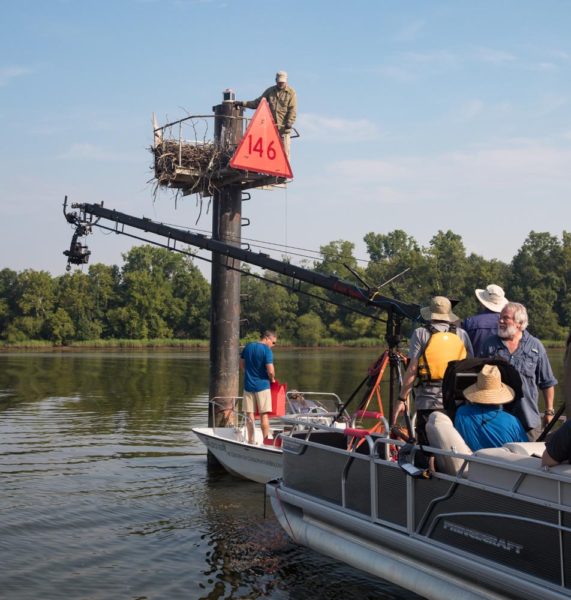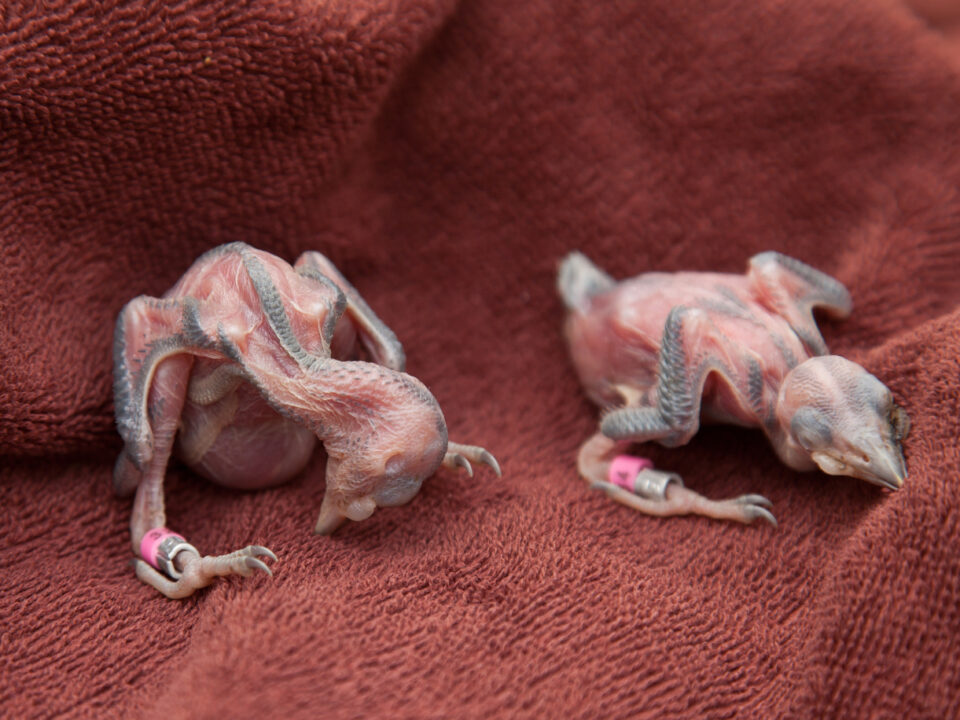Expedition Chesapeake

Up and down year for Virginia woodpeckers
July 17, 2018
Anhingas march north
August 23, 2018By Bryan Watts | bdwatt@wm.edu | (757) 221-2247
July 17, 2018
The Chesapeake Bay is one of the largest estuaries in North America and one of the most productive aquatic ecosystems on the planet. Its watershed covers portions of six states and is home to more than 18 million people. The economic benefit flowing from the Bay to these six states is estimated to be 30 billion dollars annually. In 2009, President Barack Obama signed an Executive Order designating the Bay as a national treasure and recognizing its importance to the entire country. An intended outcome of this designation was to rally the resources needed to protect the unique constellation of species that rely on the Bay. The Bay is subjected to an unrelenting assault from the people and industries that live and operate within its watershed.

Bryan Watts, Jeff Corwin and Marie Pitts head down the James River to band osprey with cinematographer James Neihouse filming from the back of the boat. Photo by Mike Ostrander.

Jeff Corwin, Bryan Watts and Marie Pitts stand on the boat below an osprey nest as the IMAX film crew set up to film the banding scene. Photo by Mike Ostrander.
Expedition Chesapeake is a multi-media project funded by the Whitaker Center for Science and the Arts that is designed to educate and inspire the residents of the watershed to become better stewards of the Bay. It focuses on the interconnections found within the complex ecosystem and how activities within one portion of the Bay may have unintended consequences in others. The anchor of the program will be a 44-minute, giant-screen documentary film that highlights the ecology and ongoing conservation research focused on six iconic species including the blue crab, oyster, striped bass, osprey, river otter and hellbender. The film will be hosted by Emmy award winning TV personality, Jeff Corwin.

Bryan Watts collects and lowers an osprey brood down to the boat to Jeff Corwin and Marie Pitts for banding. Photo by Mike Ostrander.

A brood of osprey on a light marker located on the upper James River. Photo by Bryan Watts.
CCB’s ongoing work with osprey on the upper James River will be featured in the documentary film. Recently, a film crew from VIA Studios traveled down to the James along with Jeff Corwin to film nesting osprey and CCB biologists working on the river. The film opening is scheduled for 19 March, 2019 in Harrisburg, Pennsylvania. The film is intended to be distributed worldwide to reach museum audiences.
Related posts
Adult female from Elkins Chimney territory. Both the female and male were lost from this site between 2024 and 2025 nesting seasons and were not replaced. This territory has been occupied since 1995. Five territories were vacated between 2024 and 2025 along the Delmarva Peninsula in VA. Photo by Bryan Watts



